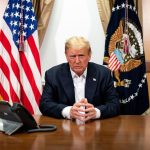The Democratic Party’s early jockeying for the 2028 presidential race has revealed a field of candidates that underscores the party’s ongoing struggle to define its identity and connect with voters. A Washington Post analysis recently spotlighted a dozen potential contenders, including Pennsylvania Senator John Fetterman, Michigan Governor Gretchen Whitmer, and former Vice President Kamala Harris. While the list offers a glimpse into the party’s future, it also highlights the challenges Democrats face in finding a leader who can inspire confidence and bridge the growing disconnect with the American electorate.
At the top of the list is John Fetterman, whose unconventional style and populist appeal have made him a polarizing figure. Known for his casual attire and plainspoken demeanor, Fetterman has carved out a unique niche in American politics. However, his ability to resonate on a national stage remains uncertain. Critics argue that his approach, while refreshing to some, may not translate into broad electoral success. The image of a casually dressed Fetterman taking the oath of office may amuse some but raises serious questions about whether he can embody the gravitas expected of a president.
Kamala Harris, once seen as a rising star within the party, continues to struggle with low approval ratings and an inability to connect with voters. Her tenure as vice president was marked by criticism over her handling of key issues like immigration and her perceived lack of leadership on domestic policy. Despite these setbacks, Harris remains a prominent figure in Democratic circles. Yet her inclusion on the list feels more like an obligation than an endorsement of her viability as a candidate.
Pete Buttigieg, former mayor of South Bend and Secretary of Transportation, also cut. While his historic candidacy as an openly gay politician brought him national attention, his tenure in Washington has been marred by controversies over supply chain issues and infrastructure delays. Buttigieg’s polished rhetoric and media savvy may appeal to certain segments of the Democratic base, but his ability to win over working-class voters remains in doubt.
Governors like Gretchen Whitmer and Josh Shapiro bring executive experience and regional appeal to the table but face their own hurdles. Whitmer’s handling of COVID-19 lockdowns drew praise from progressives but alienated many moderates and conservatives in her state. Shapiro, often compared to Barack Obama for his pragmatic approach, has yet to establish himself as a national figure capable of uniting the party’s disparate factions.
The broader field also includes names like Michigan Governor Tim Walz and Georgia Senator Raphael Warnock, both of whom have shown promise in battleground states but lack widespread name recognition. Meanwhile, figures like Alexandria Ocasio-Cortez represent the progressive wing of the party but risk alienating moderates with their far-left policies.
The Democrats’ current roster reflects a party at a crossroads—torn between embracing progressive ideals and appealing to centrist voters who feel increasingly disconnected from its priorities. With polls showing that many Americans are dissatisfied with the party’s direction, Democrats must confront hard truths about their messaging and leadership if they hope to remain competitive in 2028.
Ultimately, the early list of potential candidates underscores the Democrats’ identity crisis. While Republicans rally behind President Trump’s populist agenda, Democrats appear fragmented, unable to coalesce around a unifying vision or leader. If they hope to regain their footing, they will need more than just familiar names—they will need bold ideas and candidates who can genuinely connect with voters across ideological divides. For now, however, the road ahead looks anything but smooth for a party still searching for its next standard-bearer.




